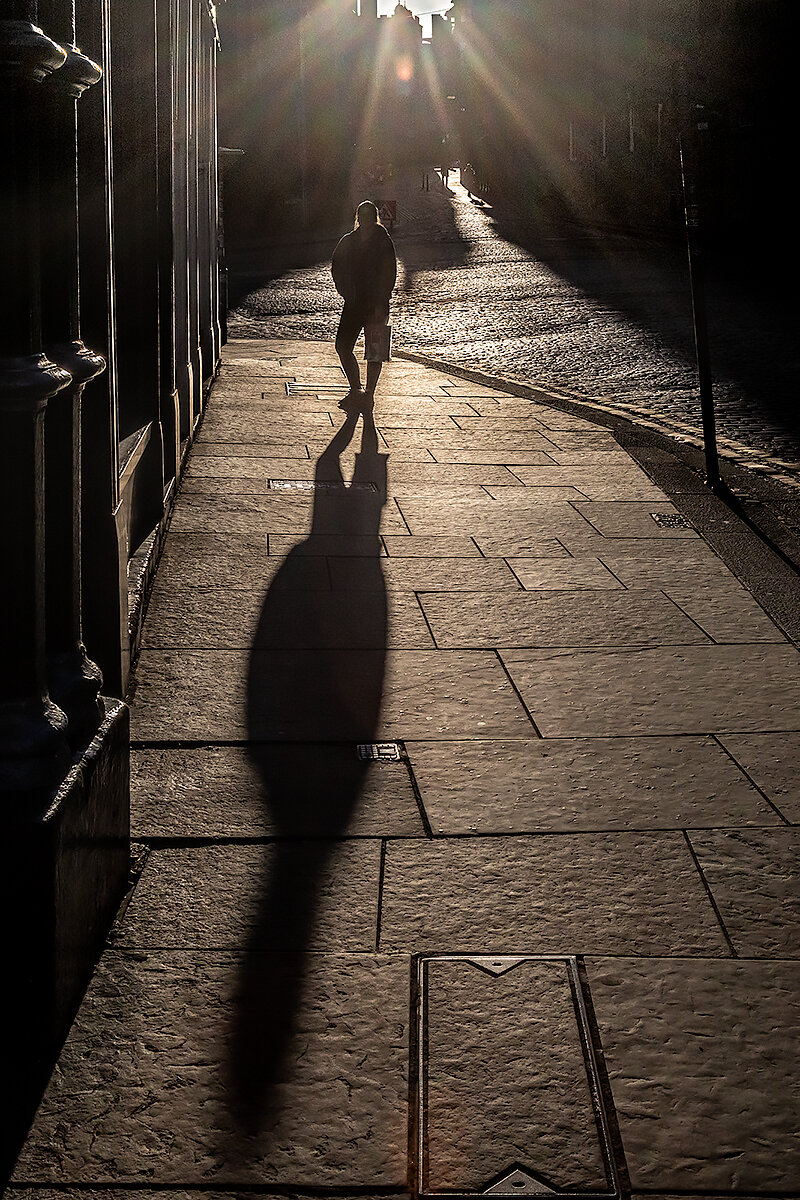Last March, my photography trip to the Outer Hebrides was cut short, and I returned to Edinburgh where Caroline and I packed so she could leave the University, and not know what the future would be like. We put our luggage in a nearly vacant hotel, and took an evening walk through the quiet streets of the capitol city. We were on the Royal Mile, so we first headed up to the castle for an unusual sight of no one around the imposing entrance.
Edinburgh Castle
The castle is on an ancient volcanic plug and dominates the city. A mile long ridge connects the castle mount to Holyrood Palace a mile away. About half way along the Royal Mile is St. Giles Cathedral, where John Knox preached and what is called the Mother Church of Presbyterians. Building was begun in the 14th Century, finished in the 16th, and significantly remodeled in the 19th. Outside is a statue of the Duke of Beccleuch, whose name was Walter Scott, and whose guardian was the writer Sir Walter Scott, who has a much more imposing memorial in the city himself.
St. Giles Cathedral and the Duke of Buccleuch
With the sun behind us we continued east on the empty sidewalks.
Royal Mile shadows
Eventually we could see the other volcanic ridge that overlooks the western side of the city known as Arthur’s Seat. A beautiful park surrounds the peak and hike up offers a beautiful view of Old Town.
Arthur’s Seat
However, we decided to head to another location neither of has been to. Calton Hill offers another view over Edinburgh. We could look over Waverly train station back to the castle. On the right edge of image is the imposing Victorian memorial to Sir Walter Scott. It’s the world second largest memorial to a writer. You’d need to travel to Havana to see the larger one to José Martí.
View from Calton Hill
The Scott Memorial is on Princess Street, and from there to the north is New Town Edinburgh which is one of the world’s first effort at urban planning. The medieval town maze was crowded and wealthy citizens were leaving, so a competition was held to build a new town. In 1766, twenty-six year old James Craig designed a grid system of streets, homes and businesses. It took a century to complete the Georgian complex. Some students had a relaxing view into New Town and out to the Firth of Forth.
New Town Edinburgh
TIme for us to head down Calton Hill along Leith Street toward Princess Street and back to Old Town for our last night in the city. Caroline is back and now enjoying her last two weeks in Scotland while finishing her Masters.
Leith Street to Princess Street




























































































































